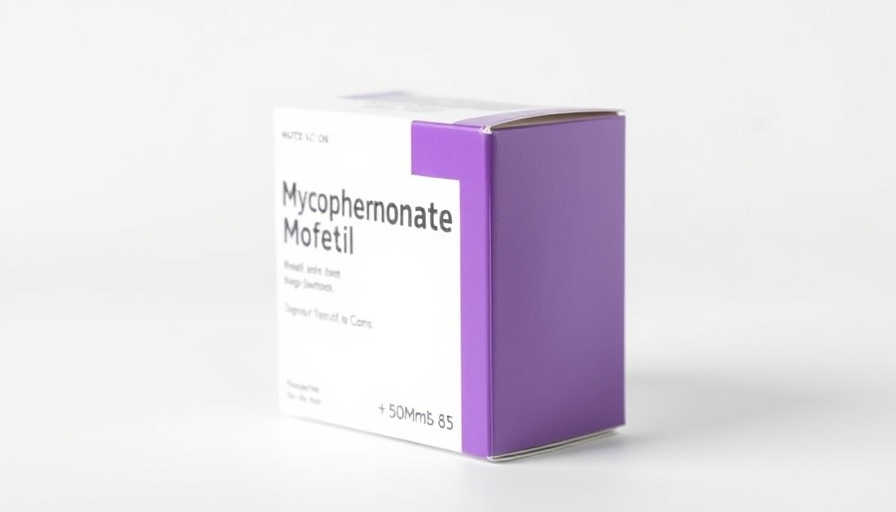
Understanding the Cancer Risk Differences Among MMF Patients
Recent research highlights crucial differences in cancer risks associated with the use of mycophenolate mofetil (MMF) depending on the underlying medical conditions being treated. A study conducted at Atrium Health Wake Forest Baptist Medical Center showcased that patients using MMF for dermatologic conditions experienced a significantly lower risk of developing malignancies when compared to organ transplant recipients.
Key Findings from the Study
The study included an analysis of different patient cohorts from 2012 to 2025, comprising 126 dermatologic patients on MMF, 226 organ transplant recipients, and 296 dermatological patients without systemic immunosuppression. Findings revealed that only 9.5% of the dermatologic patients developed cancers, in stark contrast to 36% of those undergoing organ transplants—indicating a dramatic 74% reduction in cancer risk for those treated with MMF for dermatological reasons.
The Role of Concomitant Therapies and Dosage
An interesting aspect of the study was the dosing and supportive therapies involved. Patients with dermatologic conditions received an average daily dose of 1390 mg over approximately 7.5 years, while transplant recipients were prescribed a lower dose of 807 mg for a longer duration of nearly 10 years. Moreover, only 40% of dermatologic patients were prescribed additional immunosuppressive treatments, while all transplant recipients were given a combination of drugs. This discrepancy highlights how different treatment protocols can drastically alter patient outcomes.
Implications for Treatment Strategies
The implications of these findings are twofold:
- Tailored treatment pathways: Physicians might consider varying their treatment plans based on an individual's underlying conditions, leading to more personalized approaches that minimize cancer risks.
- Informed patient decisions: With a nuanced understanding of risks, patients receiving MMF for dermatological conditions can make more informed choices regarding their treatment options.
Future Trends in Risk Assessment and Management
The study suggests a need for greater awareness and potential revision of how MMF is prescribed based on the indications. Clinicians might begin integrating these insights into their practice, while future research should aim to explore the mechanisms behind the differing malignant risks associated with MMF therapy.
Conclusion: A Step Forward in Oncology and Dermatology
This exploration of risk factors opens a vital discussion in both oncology and dermatology. The findings urge healthcare professionals to critically evaluate MMF’s role in treatment regimens while fostering a dialogue about the importance of personalized medicine. Such advancements indicate promising directions not only for better treatment outcomes but also for minimizing adverse effects in vulnerable patient populations.
 Add Row
Add Row  Add
Add 




Write A Comment